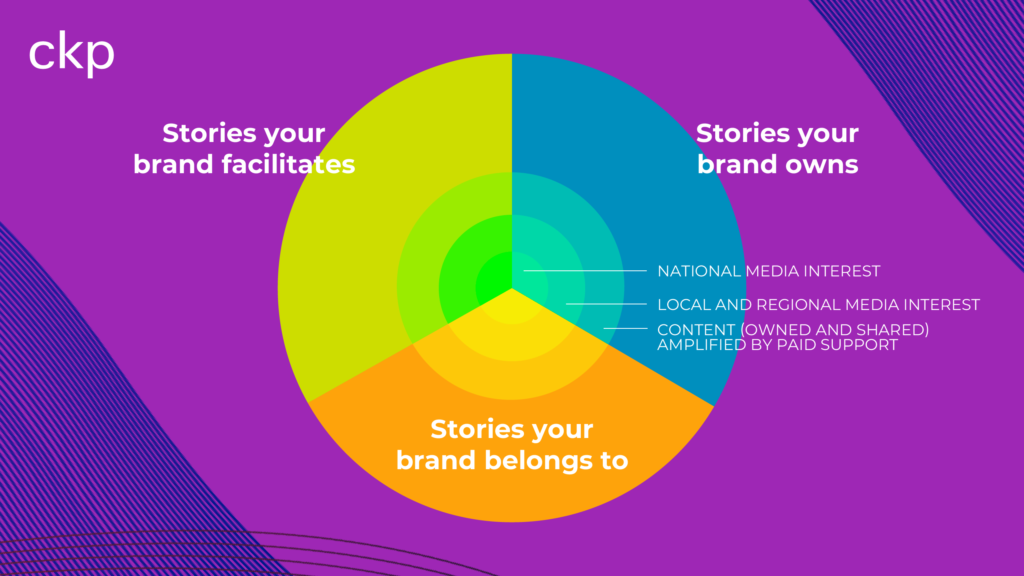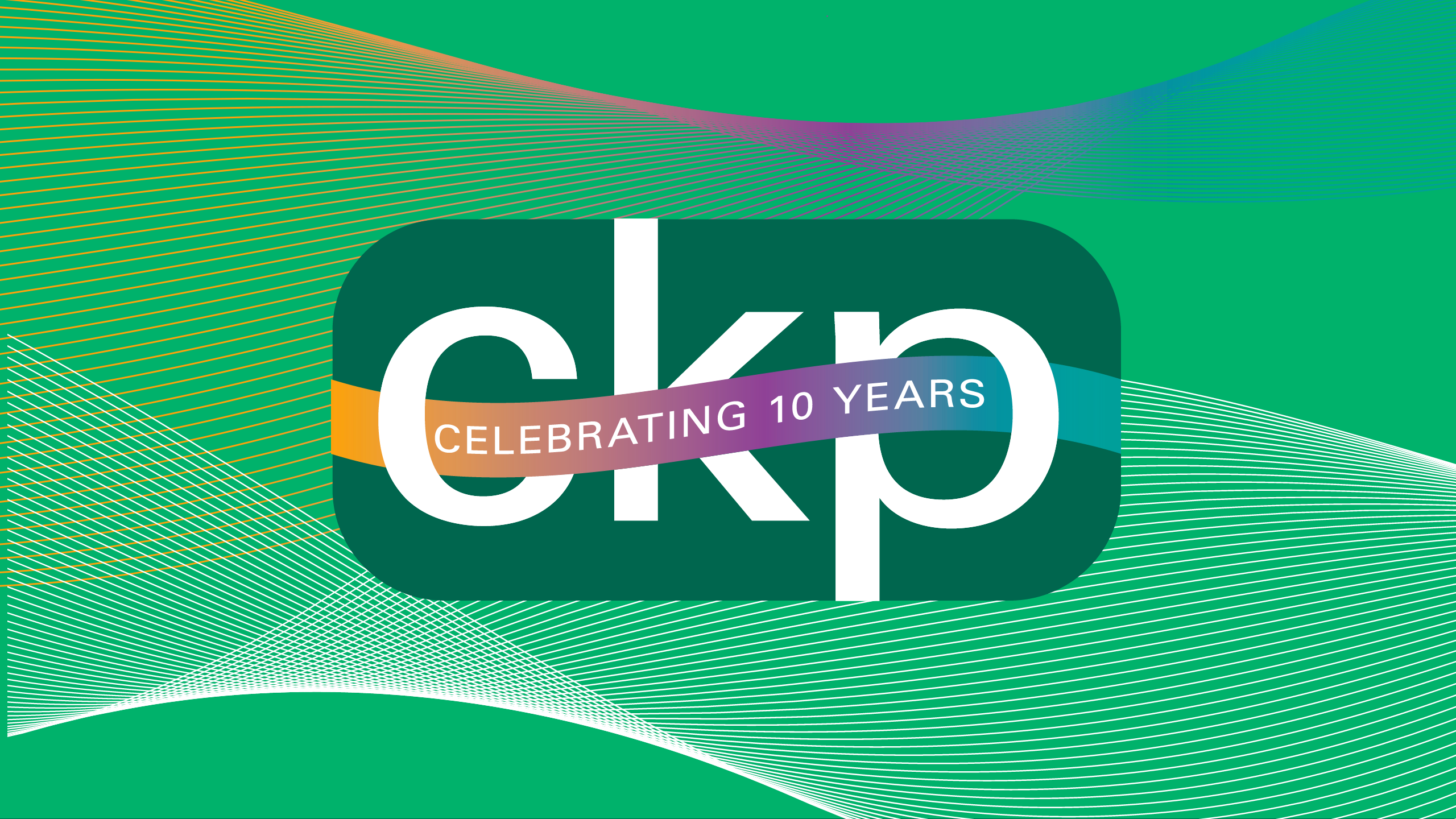Getting Your Public Relations Program Started: A Step-by-Step Guide to Building a Strong Brand

Think of your business as a narrative ready to unfold.
Every interaction, product launch, and customer experience adds a new chapter. But how do you ensure your story reaches the right audience and resonates with them? Enter public relations (PR) — the strategic art of storytelling that can elevate your brand, connect with your audience, and help you navigate the complexities of today’s media landscape. Whether you’re a startup aiming to make your mark or an established brand seeking to maintain your reputation, a well-crafted public relations program can be your most powerful tool.
Notice we didn’t say public relations campaigns? That’s because an effective public relations strategy isn’t about isolated efforts. It requires a commitment that aligns with your brand promise and values. Building relationships with your audience isn’t achieved through a single effort. It takes sustained, “always-on” engagement that is seen, felt, and understood over time. That’s how you establish trust.
We’ll walk you through the essentials of starting your public relations program, offering insights and strategies to help you harness the full potential of public relations for your business.
Here’s what we will cover:
- Understanding the Role of Public Relations in Your Business Strategy
- Marketing vs. Public Relations: Two Sides of the Same Coin
- Crafting a PR Strategy That Fills Marketing Gaps
- Identifying and Understanding Your Audience
- In-House vs. Agency: Which PR Approach Is Right for You?
- PR as Storytelling: The Heart of Your Brand
- The Value of Investing in PR
Understanding the Role of Public Relations in Your Business Strategy
Public relations plays a crucial role in shaping how your brand is perceived by the public, media, and key stakeholders. It’s not just about getting your name out there in the press; it’s about building and maintaining a positive image that aligns with your brand’s values and mission. A successful public relations program can help you address business challenges, fill gaps in your marketing efforts, and create lasting connections with your audience.
The First Step: Identifying Your Business Challenges
Before diving into public relations strategies, take a step back and assess your business challenges. Are you struggling with brand awareness? Is there a need to enhance your company’s reputation or manage a potential crisis? Do you feel your audience doesn’t understand your business? Maybe you’re looking to build stronger relationships with customers, investors, or other stakeholders. Each of these challenges can be effectively addressed through a tailored PR strategy.
Consider this: If your brand is relatively unknown and you’re entering a crowded market, a public relations program focused on media relations, influencer relations, corporate communications, and content could help increase visibility. Conversely, a proactive crisis management plan is essential to mitigate negative public sentiment and maintain trust—especially if your company faces the risk of a crisis or operates in a highly scrutinized industry.
Identifying your specific business challenges is critical to developing a public relations strategy that directly addresses your needs and aligns with your broader business goals.
Marketing vs. Public Relations: Two Sides of the Same Coin
It’s easy to conflate marketing and public relations, but understanding their differences—and similarities—is crucial for leveraging each effectively. While marketing focuses on promoting products or services to drive sales, public relations is about building and sustaining a positive brand image and managing relationships with various stakeholders.
Where PR Shines: Building Trust and Credibility
One of the key distinctions between marketing and public relations is the source of the message. Marketing often involves paid promotions, which can sometimes be perceived as self-serving. In contrast, public relations is about earning attention with a message people want to share. Most often, we think of coverage that you don’t pay for, like news articles, social media mentions, or word-of-mouth endorsements. These third-party endorsements add a layer of credibility that paid advertisements can’t match. But a public relations message and approach also work effectively across social media, content marketing, and even advertising, amplifying and expanding the reach of your efforts.
For example, a feature story about your company in a reputable publication can carry more weight than a paid ad. Consumers tend to trust media coverage and social proof over promotional content, making public relations an essential component of building long-term trust and credibility. You can also use paid tactics to increase the reach of your coverage, share it on social channels, and distribute it both internally and externally via email.
Pro Tip: Use PR to complement your marketing efforts by focusing on building authentic relationships with influencers, journalists, and other key voices in your industry. These relationships can result in more genuine endorsements and long-term partnerships, which are often more valuable than one-off promotional deals.
Crafting a PR Strategy That Fills Marketing Gaps
While marketing is essential for driving immediate sales, public relations plays a critical role in building your brand’s reputation over the long term. Let’s explore how public relations can fill the gaps in your marketing strategy:
PR for Reputation Management
In today’s digital age, a single negative review or social media post can quickly spiral out of control, potentially damaging your brand’s reputation. A proactive PR strategy, including media relations and crisis management, can help you navigate these challenges effectively. For instance, a well-executed PR activation can help you tell your brand’s story in a way that resonates with your audience and positions your company as a leader in your industry.
Develop a crisis management plan that includes key messaging, spokesperson training, and outreach strategies to media and audiences that are important to you. This will prepare your team to respond quickly and effectively to any potential crises.
PR for Long-Term Brand Building
Where marketing might focus on short-term sales goals, PR is about building a sustainable brand reputation. For example, a marketing campaign might be centered around a seasonal sale, while a public relations initiative might focus on highlighting your brand’s commitment to sustainability or community involvement. These stories help to humanize your brand and foster a deeper connection with your audience.
More and more, consumers are seeking out brands that reflect their own values. Use public relations to showcase your brand’s mission, values, and long-term vision to build loyalty and trust with your audience.
Identifying and Understanding Your Audience
A successful public relations strategy starts with a deep understanding of your audience. Who are they, and where do they consume media? Understanding these nuances will help you craft a public relations strategy that reaches the right people in the right places.
Tailoring Your PR Strategy to Your Audience
Consider the following when identifying your audience:
- Demographics: Age, gender, income level, and education.
- Psychographics: Interests, values, and lifestyle.
- Media Consumption Habits: Do they prefer traditional newspapers, online news platforms, social media, or podcasts?
For example, if your target audience consists of young professionals, you might focus your public relations efforts on digital platforms like LinkedIn or Instagram. If you’re targeting an older demographic, traditional media outlets like newspapers or television might be more effective.
Pro Tip: Use data analytics tools to gain insights into your audience’s behavior and preferences. This will allow you to tailor your PR strategy to meet their specific needs and preferences.
In-House vs. Agency: Which PR Approach Is Right for You?
Once you have a clear understanding of your business challenges and audience, the next step is deciding whether to handle your PR efforts in-house or hire an agency. Both approaches have their advantages:
In-House PR
- Control: Direct oversight of PR activities and messaging.
- Cost-Effective: May be more cost-effective for smaller businesses with limited budgets.
- Consistency: Ensures consistency in messaging and branding.
Agency PR
- Expertise: Access to a team of experienced PR professionals with industry-specific knowledge.
- Media Connections: Established relationships with journalists, influencers, and other media professionals.
- Scalability: Ability to scale PR efforts up or down based on your needs.
If your business lacks in-house PR expertise or needs to manage multiple PR initiatives simultaneously, working with an agency can provide the support and strategic guidance needed to achieve your goals.
PR as Storytelling: The Heart of Your Brand
Public relations is much more than just managing media relations or responding to crises; it’s about crafting and sharing stories that resonate with your audience on a deeper level. At its core, public relations is a combination of narratives that align with your brand’s mission, promise, and values, creating a cohesive and compelling image that people can connect with and that appeals to logic and emotion.
We call this share of mind and share of heart.
The Power of Storytelling in PR
Stories are nuanced and powerful because they tap into the human experience, making them more memorable than mere statistics or facts. Research by Dr. Jennifer Aaker from the Stanford Graduate School of Business found that “stories are up to 22 times more memorable than facts alone.” This underscores the importance of using storytelling as a central strategy in your public relations efforts.
In the context of PR, stories have the potential to shape perceptions, influence behavior, and build long-lasting connections with your audience. Unlike a marketing message that might focus on a single campaign or product launch, public relations stories can span across different aspects of your brand, weaving together a narrative that reflects your core values and long-term vision.
Crafting and Amplifying Your Stories
Not all stories are created equal, and understanding how to craft, deploy, and amplify them is crucial for effective public relations. Some stories are inherently yours—they reflect your brand’s origins, mission, and achievements. Other stories belong to your people and partners—your employees, customers, and community organizations and members who engage with your brand in meaningful ways. Additionally, some stories belong to the broader industry in which you operate, highlighting trends, innovations, or challenges that impact your brand.
Collecting and Classifying Stories
There are three types of stories:
- Stories your brand owns
- Stories your brand facilitates
- Stories your brand belongs to
Stories your brand owns are centered on your brand’s accomplishments, initiatives, products, and services. Since these stories originate from your organization, you have full control over shaping the narrative, message, and timing to best align with your communication goals.
Stories you facilitate highlight the impact experienced by another party with whom you have a relationship, such as a person benefiting from your services or a partnering organization. While your role is influential, the focus is on how your involvement has made a difference in their experience or success, allowing their perspective to shape the narrative.
Lastly, the stories you belong to represent the broader narratives you are a part of but don’t fully control. These stories are often shaped by external events, trends, and industry landscape in which your organization plays a role. You participate in a larger story, contributing a perspective or angle but without direct control over how the narrative unfolds.
Collecting and classifying your stories allows you to determine how to share them. You can identify which stories are most suitable for your own content channels, such as blogs, newsletters, and social media. You can also determine which stories have a local or regional appeal, making them ideal for targeted media relations efforts. Finally, some stories carry more weight or have broader significance, making them strong candidates for national media coverage.
This enables your to deliver the right story to the right audience, through the right channel, at the right time.

The Importance of Authenticity
To be effective, these stories must be genuine and authentic. In today’s media-savvy world, audiences can quickly spot a stunt or insincere messaging.
The most compelling PR stories are those that are rooted in authenticity. Audiences today value transparency and honesty, and they expect brands to communicate in a way that feels real and relatable. This means avoiding gimmicks or stunts that may garner short-term attention but ultimately undermine trust. Instead, focus on telling stories that are true to your brand and that genuinely reflect the experiences and values of your people and your industry.
Pro Tip: To ensure your PR stories are authentic, involve your team in the storytelling process. Gather insights and experiences from across your organization, and use these to create narratives that are not only compelling but also truthful and representative of your brand’s mission.
The Value of Investing in PR
Investing in a public relations program is not just about getting your name in the press; it’s about building a resilient brand that can withstand challenges and grow over time. A well-executed PR strategy can shape public perception, manage crises, and build lasting relationships with your audience.
PR as a Long-Term Investment
In a world where consumers are increasingly skeptical of advertising, the authenticity and trust that PR can provide are more valuable than ever. By investing in PR, you’re investing in the long-term success of your brand.
Launching a PR program requires careful planning, a deep understanding of your audience, and a clear strategy that aligns with your business goals. By identifying your business challenges, understanding the differences between marketing and PR, and crafting a tailored PR strategy, you can build a brand that not only stands out but also endures. Whether you choose to handle PR in-house or partner with an agency, the key is to start with a clear vision and stay committed to telling your brand’s story in a way that resonates with your audience. With the right approach, your PR efforts can help you build a strong, resilient brand that thrives in today’s competitive market.
More Blog Posts

Let’s be real—communication at work is kind of like a group chat. Some people over-share, some barely respond, and others...

Once upon a time, PR meant faxing a press release and hoping someone, somewhere, had paper in their machine. All...

Employee Appreciation Day, recognized on the first Friday in March, will be celebrated this year on March 7. It is...

1. The Power of Sustained Impression (Or: Stop Passing Out at First Dates) Let me tell you about a date...

